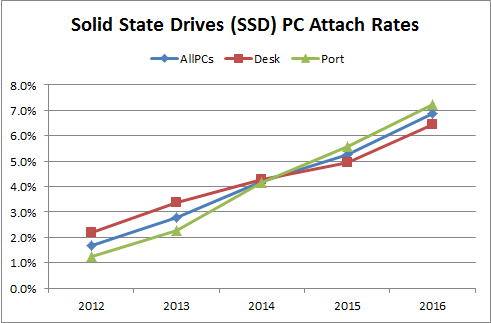The rotating platter hard disk drives (HDD) have been around since the early days of PCs. Technology improvements are allowing for the improvement of speeds and capacity. Basically the HDD technology involves a armature that moves across the surface of the platter. Using magnetism, the drive head reads and writes information to the disk. SSD stores its data on flash memory chips similar to the technology that is found on thumb and flash drives.
Solid-state drive technology has been around for decades. It wasn’t until 2005 that Samsung declared SSD as a strategic market. Solid-state drives soon began to appear in high-in portable PCs. Over the years, capacities are increasing and prices are coming down. A recent quick internet research of SSD prices show that you can find 500GB drives for around $150.
Since SSD uses no moving parts, data writing and retrieval can be done much faster. They also are generally more rugged and reliable than HDD hardware. They consume less energy than the rotating platter technology and make little to no noise. Also, SSD do not have the concern of file fragmentation that the HDD have with their spinning disks and read / write armatures. Because of their ruggedness and low energy consumption, they are becoming more popular with portable PCs. With all the advantages that SSD has over HDD, price, availability and capacity are probably the primary factors constraining the acceptance of this new technology.
Whether your aging hard drive is making funny noises or if you would just like to see improved hard drive performance, do some research and see if a SSD is right for you. See Bob Rankin’s post “Solid State Drives are The Future – Should You Upgrade”

Our research shows that the popularity of solid-state drives continue to increase. As of October 2016, solid-state drives are found on approximately 8% of PCs processed through our scans.




